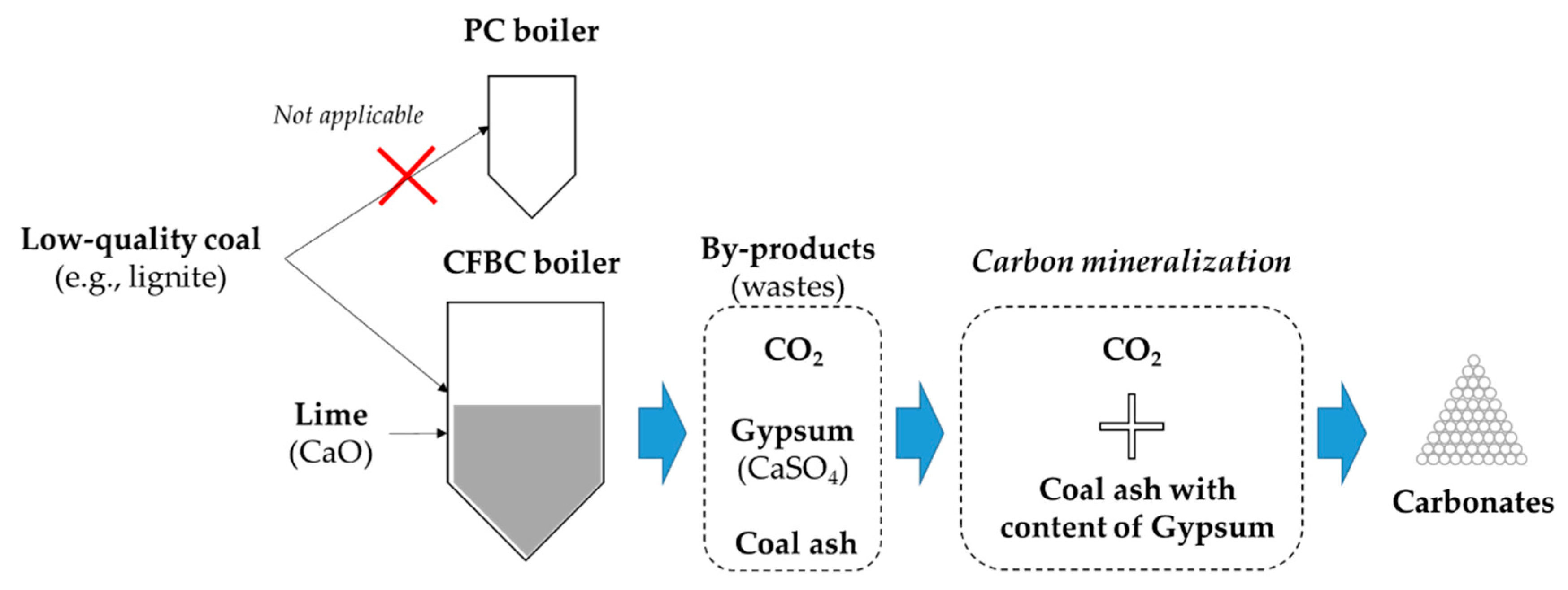An Integrative Approach to International Technology Transfer for Recycling Vietnam Coal Ash with Consideration of the Technological, Legal, and Network Perspectives
Abstract
:1. Introduction
2. Technological Feasibility for Carbon Mineralization Technology in Vietnam
3. Legal Framework Analysis for Technology Application of Recycling Coal Ash Waste in Vietnam
3.1. Legal Hierarchy of Vietnam
3.2. Legislation on Recycling Coal Ash Waste
3.3. Implication of Analysis on the Legal Framework in Vietnam
4. Establishing Cooperative Networks between Countries
5. Concluding Remarks
Author Contributions
Funding
Conflicts of Interest
References
- Thenepalli, T.; Ngoc, N.T.M.; Tuan, L.Q.; Son, T.H.; Hieu, H.H.; Thuy, D.T.N.; Thao, N.T.T.; Tam, D.T.T.; Huyen, D.T.N.; Van, T.T.; et al. Technological solutions for recycling ash slag from the Cao Ngan coal power plant in Vietnam. Energies 2018, 11, 2018. [Google Scholar] [CrossRef] [Green Version]
- Lee, J.; Jang, C.; Shin, K.N.; Ahn, J.W. Strategy of developing innovative technology for sustainable cities: The case of the national strategic project on carbon mineralization in the Republic of Korea. Sustainability 2019, 11, 3613. [Google Scholar] [CrossRef] [Green Version]
- Innovation for Cool Earth Forum (ICEF). Global Roadmap for Implementing CO2 Utilization. 2016. Available online: www.globalco2initiative.org (accessed on 11 December 2019).
- Karagiannidis, A.; Wittmaier, M.; Langer, S.; Bilitewski, B.; Malamakis, A. Thermal processing of waste organic substrates: Developing and applying an integrated framework for feasibility assessment in developing countries. Renew. Sustain. Energ. Rev. 2009, 13, 2156–2162. [Google Scholar] [CrossRef]
- Rai, V.; Funkhouser, E. Emerging insights on the dynamic drivers of international low-carbon technology transfer. Renew. Sustain. Energ. Rev. 2015, 49, 350–364. [Google Scholar] [CrossRef]
- Dinid, A.; Quang, D.V.; Vega, L.F.; Nashef, E.; Abu-Zahra, M.R.M. Applications of fly ash for CO2 capture, utilization, and storage. J. CO2 Util. 2019, 29, 82–102. [Google Scholar] [CrossRef]
- Bontempi, E.A. New approach to evaluate the sustainability of raw materials substitution. In Raw Materials Substitution Sustainability; Springer: Cham, Switzerland, 2017; ISBN 978-3-319-60830-3. [Google Scholar]
- Jeon, E.-D.; Lee, K.-U.; Lee, C.-K. Development of new clean development mechanism methodology for the quantification of greenhouse gas in calcium sulfoaluminate cement. Sustainability 2019, 11, 1482. [Google Scholar] [CrossRef] [Green Version]
- Kurama, H.; Kaya, M. Usage of coal combustion bottom ash in concrete mixture. Constr. Build. Mater. 2008, 22, 1922–1928. [Google Scholar] [CrossRef]
- Duc, D.S. Properties of fly ash from a thermal power plant in Vietnam. Int. J. Chem. Tech. Res. 2014, 6, 2656–2659. [Google Scholar]
- Thien, L.V.; Chau, N.T.T.; Hong, L.T.T.; Nam, L.H.; Thien, L.V. Physico-chemical and mineralogical properties of fly ash from thermal power stations in Northern Vietnam. VNU J. Sci.: Earth Env. Sci. 2016, 32, 334–341. [Google Scholar]
- Hwang, C.L.; Huynh, T.P. Properties of unfired building bricks prepared from fly ash and residual rice husk ash. Appl. Mech. Mater. 2015, 754, 468–472. [Google Scholar] [CrossRef]
- Dick, E.P.; Ryabov, G.A.; Tugov, A.N.; Soboleva, A.N. Comparing properties of coal ash and alternative-fuel ash. Therm. Eng. 2007, 54, 231–235. [Google Scholar] [CrossRef]
- Liu, G.; Li, N.; Yan, W.; Gao, C.; Zhou, W.; Li, Y. Composition and microstructure of a periclase–composite spinel brick used in the burning zone of a cement rotary kiln. Ceram. Int. 2014, 40, 8149–8155. [Google Scholar] [CrossRef]
- Ahn, J.W. Preparing Method for Complex Calcium Carbonate Using Coal Ash. Patent KR10183 2018. [Google Scholar]
- Montes-Hernandez, G.; Perez-Lopez, R.; Renard, F.; Nieto, J.M.; Charlet, L. Mineral sequestration of CO2 by aqueous carbonation of coal combustion fly-ash. J. Hazard. Mater. 2009, 161, 1347–1354. [Google Scholar] [CrossRef] [PubMed] [Green Version]
- Brandes, K.; Schoebitz, L.; Nguyen, V.-A.; Linda, S. SFD promotion initiative, Hanoi Vietnam; final report; Eawag: Dübendorf, Switzerland, 2016. [Google Scholar]
- Climate Technology Centre and Network (CTCN). CTCN: Connecting Countries to Climate Technology Solutions. Available online: www.ctc-n.org (accessed on 11 December 2019).





© 2020 by the authors. Licensee MDPI, Basel, Switzerland. This article is an open access article distributed under the terms and conditions of the Creative Commons Attribution (CC BY) license (http://creativecommons.org/licenses/by/4.0/).
Share and Cite
Lee, J.; Kim, T.; Sung, M.; Vu, H.H.T.; Shin, K.N.; Ahn, J.W. An Integrative Approach to International Technology Transfer for Recycling Vietnam Coal Ash with Consideration of the Technological, Legal, and Network Perspectives. Sustainability 2020, 12, 771. https://doi.org/10.3390/su12030771
Lee J, Kim T, Sung M, Vu HHT, Shin KN, Ahn JW. An Integrative Approach to International Technology Transfer for Recycling Vietnam Coal Ash with Consideration of the Technological, Legal, and Network Perspectives. Sustainability. 2020; 12(3):771. https://doi.org/10.3390/su12030771
Chicago/Turabian StyleLee, Jongyeol, Taeyoon Kim, Mina Sung, Hong Ha Thi Vu, Kyung Nam Shin, and Ji Whan Ahn. 2020. "An Integrative Approach to International Technology Transfer for Recycling Vietnam Coal Ash with Consideration of the Technological, Legal, and Network Perspectives" Sustainability 12, no. 3: 771. https://doi.org/10.3390/su12030771




